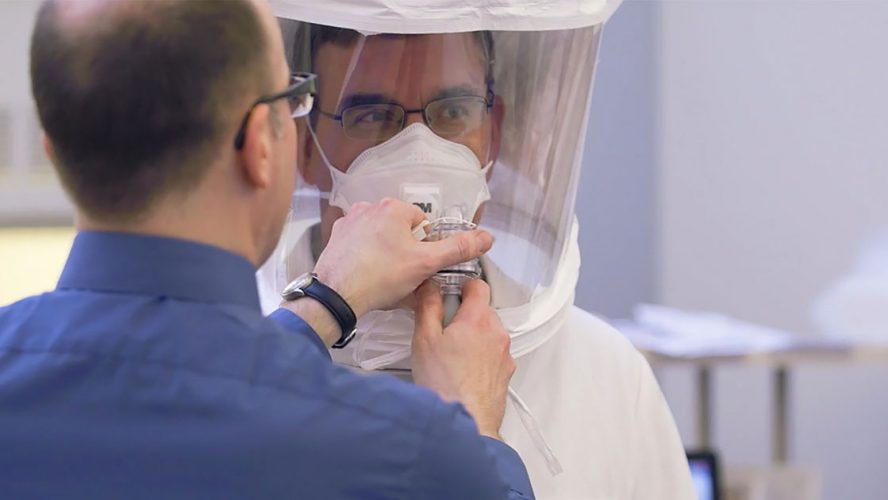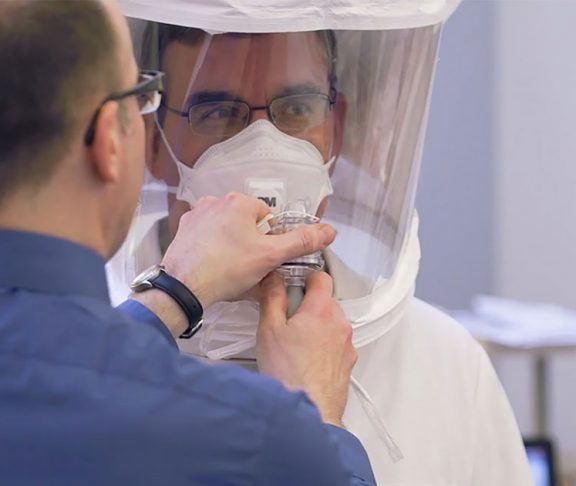As our country focuses on the next phases of re-opening businesses, buildings from large office complexes to manufacturing plants and small retail stores that were not closed properly, not maintained during the closure, and not effectively cleaned could pose a health hazard to their occupants and staff.
The American Industrial Hygiene Association (AIHA), a professional association of occupational health and safety science professionals, continues to urge employers that their physical buildings and plants need the same attention to ensure they are not “sick.” AIHA President Kathy Murphy, an occupational health and safety professional, answers a few of the most common questions employers are asking.

Kathy Murphy
President, AIHA
What industries have been the most affected by COVID-19 and will need to plan for re-entry?
Hotels, resorts, cruise ships, call centers, manufacturing facilities, office buildings, strip malls, gyms, salons, out-patient surgery facilities and other elective-medical office buildings, dental offices, entertainment places (movies, arcades, water parks), and beach-front shops.
What are your biggest concerns about re-entering buildings after they’ve been empty for months?
Waterborne pathogens such as Legionella and Pseudomonas have likely colonized many building water systems that have sat stagnant for weeks and months in the warm conditions. Inhaling the aerosols from sinks, showers, and hose-bibs, as well as cooling tower mist, could cause numerous outbreaks of respiratory disease that will initially mimic COVID-19.
What are some risks to workers if a building that has been empty for months is not properly prepared?
There are a few potential risks. If HVAC systems were not operated in a way to control relative humidity, some buildings may be growing mold. Cooling towers not properly operated, disinfected, and cleaned could pose a risk of Legionella growth.
Water heaters and potable water systems in buildings, after sitting stagnant and un-flushed, lose their residual chlorine. This condition allows Legionella bacteria in the water to grow unchecked and can lead to an outbreak of Legionnaires’ disease. Because pneumonia caused by Legionella presents with most of the same symptoms as COVID-19, emergency rooms may assume it is a resurgence of the pandemic and not offer the correct treatment.
Should workers ask their employer if the building has been properly prepared for re-entry? If so, what are the most important questions?
Yes, employees should ask if the building water system has been flushed and disinfected after sitting stagnant, if the building has been maintained during the shutdown, and if inspections for mold have been performed.
What steps do companies need to take to reopen a building, school, or other facility after being empty for months?
Companies must ensure full function of all building safety systems (fire, smoke, security, and alarm systems), and inspect all air conditioning and ventilation systems. They must also look for infestations of rodents, bats, pigeons, and other pests. Buildings will need to flush and possibly disinfect all cold and hot water systems, and water heaters to remove waterborne bacteria that will likely be present.
Are there any specific symptoms employees will present if a building has not been properly reopened?
Yes, Employees will have an increase in allergies, eye and respiratory irritation, or even infections from mold growth. Outbreaks of Pontiac fever, caused by Legionella bacteria in water, may cause “flu-like” illness.
Building water systems that aren’t properly flushed may also cause an outbreak of Legionnaires’ disease two to 14 days after exposure. Legionnaires’ disease occurs in people who inhale water droplets (aerosols) with Legionella bacteria. They will have symptoms such as shortness of breath, fever, and confusion.
Many symptoms of Legionnaires’ disease mimic those of COVID-19 and can lead to pneumonia. For anyone who is still recovering from COVID-19, pre-existing damage to their respiratory system would likely make a person more susceptible to Legionella infection.



